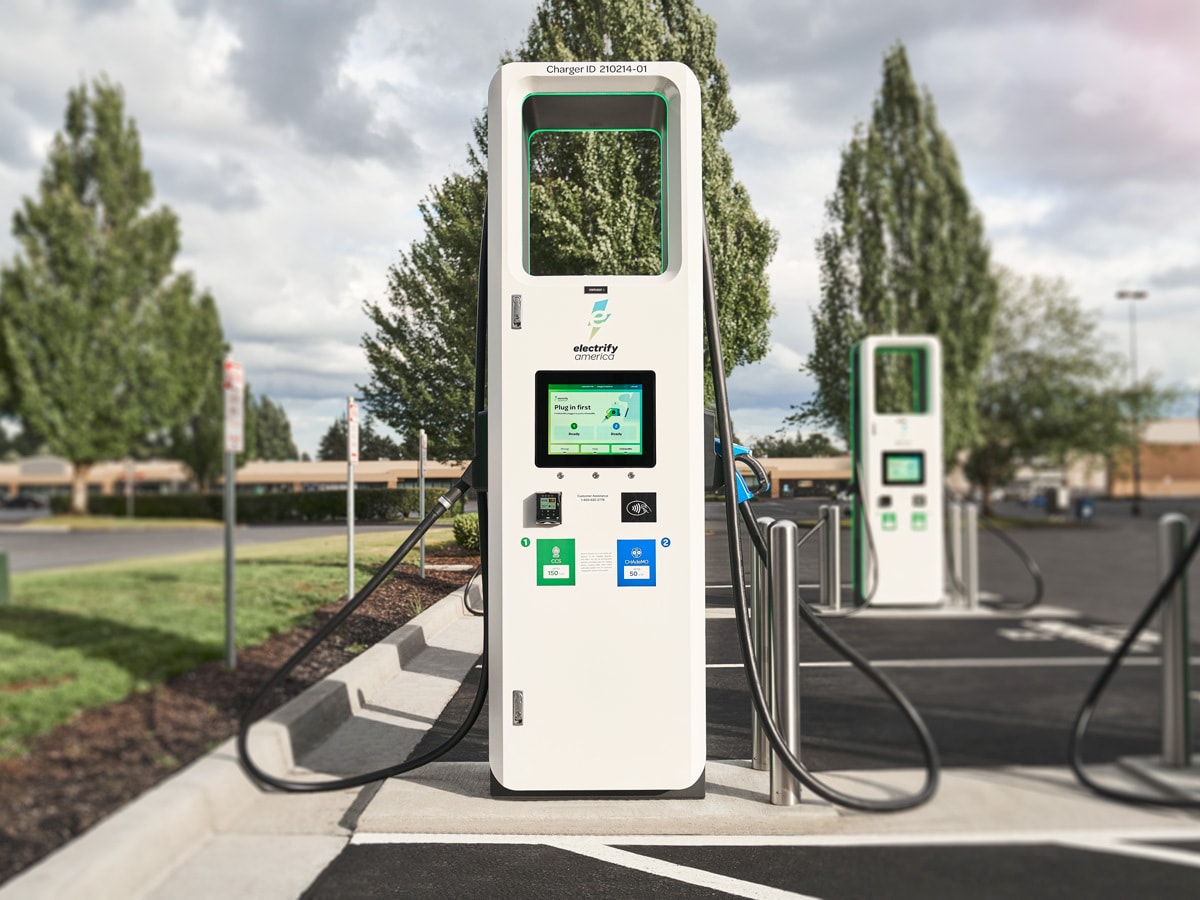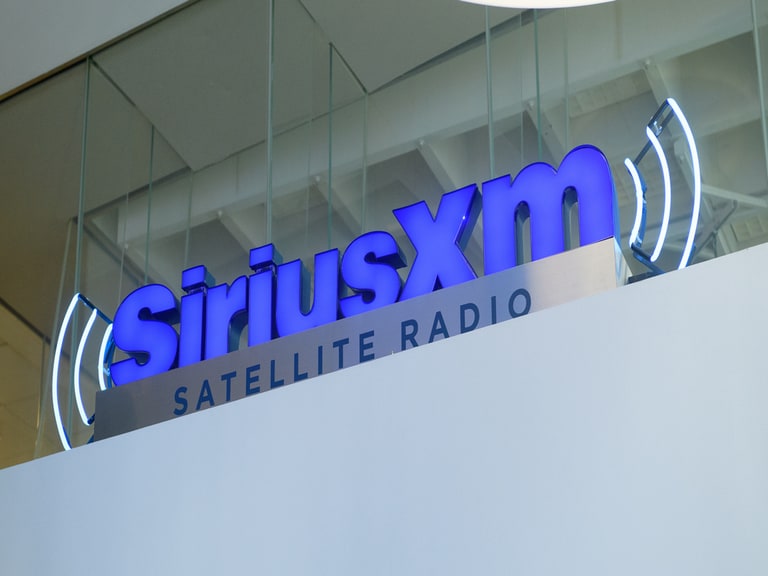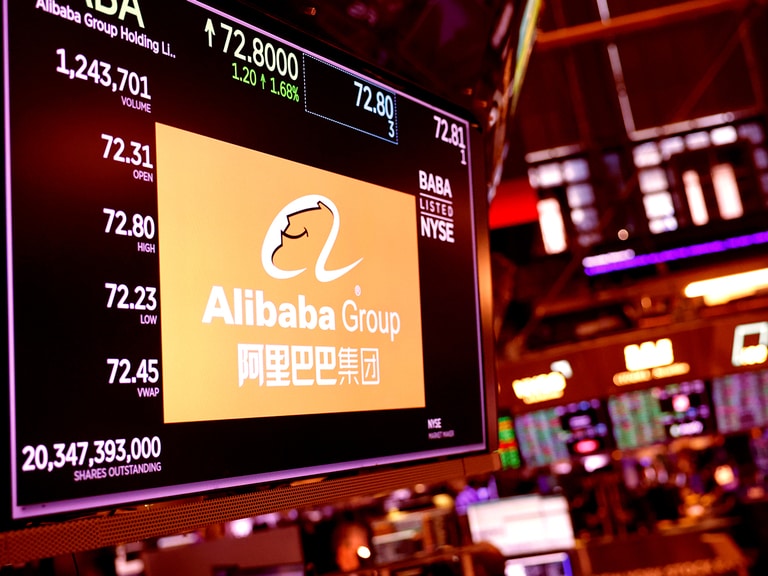Infrastructure may not be the most glamorous of investment themes, but it’s absolutely critical to the global economy, ensuring that goods and people are always on the move. Unsurprisingly, infrastructure is also an essential cog in the energy transition machine.
- To build out the US EV charging network, Tesla has opened up its technology to other automakers.
- Subsidies and tax breaks available through US legislation, including the IRA, should boost infrastructure spending.
- How to invest in infrastructure: the Global X US Infrastructure Development ETF offers exposure to companies central to the future of the country’s infrastructure and is up 12% in the past six months.
Electrify America, the charging network division of German automaker Volkswagen [VOW.DE], has become the latest company to sign up to use Tesla’s [TSLA] North American Charging Standard (NACS) technology.
The news follows similar announcements over the past few weeks from ChargePoint [CHPT], Ford [F], General Motors [GM], Polestar [PSNY], Rivian [RIVN] and Volvo [VOLV-B.ST].
Tesla announced it was opening up the design of its charging connector and charge port in November last year as part of its “mission to accelerate the world’s transition to sustainable energy”.
On 27 June, the SAE stated it would kick-start an expedited process to review NACS as a potential public standard. Washington state is also planning to require electric vehicle (EV) charging companies to include Tesla’s plug if they want to be part of a state-wide programme to electrify highways, reported Reuters on 27 June.
As the number of companies signing up to use Tesla’s charging standard continues to rise, Wedbush analyst Dan Ives believes “it’s game, set, match for Tesla owning charging domestically in the US”. NACS is proving to be an “AWS moment”, Ives added, referring to how Amazon’s [AMZN] cloud business has become crucial to its bottom line.
Charging infrastructure will be key to the US energy transition, and President Joe Biden is keen to build out the domestic charging network. Back in February, he announced a subsidy package of $7.5bn to incentivise the EV charging industry.
However, as ChargePoint chief financial officer Rex Jackson told Opto Sessions this week, “the plug is just a plug”: in the end, “the infrastructure needs to be everywhere, and you need to be able to access it” — and there are still many pieces needed to complete the puzzle.
How the sector is collaborating
As the energy transition accelerates, many companies will ramp up their investments and involvement in clean energy technologies and innovations.
“Think of a charging infrastructure as a bunch of little cell phones sitting out there talking to a network,” says Jackson, emphasising the scale of the challenge. In the end, he says, four things will be necessary for it to work: “ubiquity, accessibility, usability and reliability”.
Intelligent power management company Eaton [ETN] announced in May that it’s to work with BAE Systems [BA.L] to develop electric drive solutions for commercial trucks. The firms’ aim is to provide manufacturers with a “durable, high performance, compact, efficient and optimised system”.
Supported by grants from the US Department of Energy, Trane Technologies [TT] announced last month that it’s going to participate in three projects focused on improving the efficiency of next-generation heat pumps to help decarbonise industrial processes. One of the projects will involve working with researchers at Texas A&M University to develop a heat pump system that will leverage dehumidification, low-cost sensors and predictive controls to improve techniques for drying foods.
Also in June, NextEra Energy [NEE] teamed up with Napa Sanitation District to install Napa, California’s first wastewater treatment facility that runs a linear generator using methane produced in an anaerobic digester. The generator will help stabilise the electric grid and provide renewable power and support during outages.
Favourable legislation could drive further investment
Infrastructure spending is being driven by a raft of legislation, including the Infrastructure Investment and Jobs Act (IIJA), the Inflation Reduction Act (IRA) and even the CHIPS and Science Act.
On its first quarter (Q1) 2023 earnings call in May, United Rentals [URI] CEO and president Matt Flannery said, “we continue to see a ramp in spending from the federal infrastructure bill” across various projects and types, from airports to bridges to roads. The company is “well positioned to support our customers as they undertake projects across clean energy and advanced manufacturing funded by the IRA,” Flannery added.
Semiconductors are a critical component in industrial automation. Manufacturer Rockwell Automation [ROK] reported a number of strategic wins in its EV and battery, and semiconductor businesses in Q2 2023. “While some customers are optimising operating cost in the near term, they still continue to invest in building out new capacity to meet their production goals,” chairman and CEO Blake Moret said on the earnings call on 27 April.
Onshoring is key to securing future infrastructure
Regarding how long it should take for EVs to reach mass adoption, “I think it’s a 15- to 30-year transition,” says Jackson.
Infrastructure spending is likely to remain elevated, at least in the near- and medium-term, as supply chains reorient and companies look to onshore their manufacturing and take advantage of subsidies targeted at boosting US-made products, according to Alec Lucas, research analyst at Global X.
In the first three months of the year, words like ‘onshoring’ and ‘reshoring’ featured in the news nine times more than they did pre-pandemic, he pointed out.
“The IIJA sets up to provide a generational boost to construction demand, and we believe that it overlaps with IRA and CHIPS Act measures that look to reconstitute US disruptive technology supply chains,” wrote Lucas in research published at the beginning of June.
The need for a broader focus
The emergence and continuous evolution of artificial intelligence could lead to a further ramp in infrastructure investment as the energy and industrial sectors look to smarten their supply chains for efficiency gains.
Nevertheless, the International Renewable Energy Agency (IRENA) has warned in its 2023 outlook that infrastructure investment is focused on too few technologies.
“Greater volumes of funding need to flow to other energy transition technologies such as biofuels, hydropower and geothermal energy, as well as to sectors beyond power that have lower shares of renewables in total final energy consumption (e.g. heating and transport),” wrote the IRENA researchers.
How to invest in infrastructure
ETFs, or exchange-traded funds, offer an economical and diversified way to invest in a variety of stocks within a particular theme.
Funds in focus: Global X US Infrastructure Development ETF
Several key ETFs offer exposure to the infrastructure theme, which has recently been added to the Opto app.
Perhaps most notable is the Global X US Infrastructure Development ETF [PAVE], which has Eaton, Rockwell, Trane and United Rentals in its top 10 holdings as of 7 July. As of 30 June, the fund is weighted overwhelmingly in favour of the industrials sector (72.3%), followed by materials (21.7%). Utilities, information technology, consumer discretionary and financials make up the rest of the portfolio. The fund is up 11.9% in the past six months.
The iShares US Infrastructure ETF [IFRA] offers investors exposure to infrastructure companies primarily within utilities (39.12%) as of 6 July, followed by industrials (31.32%) and materials (19.76%). Energy and consumer discretionary have both been allocated less than a tenth of the portfolio. The fund is up 3.6% in the past six months.
For a more geographically diverse play on the infrastructure theme, there’s the iShares Global Infrastructure ETF [IGF]. Utilities have the biggest exposure (40.45%), followed by transportation (38.50%) and energy (20.38%). The fund has been flat over the past six months.
Disclaimer Past performance is not a reliable indicator of future results.
CMC Markets is an execution-only service provider. The material (whether or not it states any opinions) is for general information purposes only, and does not take into account your personal circumstances or objectives. Nothing in this material is (or should be considered to be) financial, investment or other advice on which reliance should be placed. No opinion given in the material constitutes a recommendation by CMC Markets or the author that any particular investment, security, transaction or investment strategy is suitable for any specific person.
The material has not been prepared in accordance with legal requirements designed to promote the independence of investment research. Although we are not specifically prevented from dealing before providing this material, we do not seek to take advantage of the material prior to its dissemination.
CMC Markets does not endorse or offer opinion on the trading strategies used by the author. Their trading strategies do not guarantee any return and CMC Markets shall not be held responsible for any loss that you may incur, either directly or indirectly, arising from any investment based on any information contained herein.
*Tax treatment depends on individual circumstances and can change or may differ in a jurisdiction other than the UK.
Continue reading for FREE
- Includes free newsletter updates, unsubscribe anytime. Privacy policy





